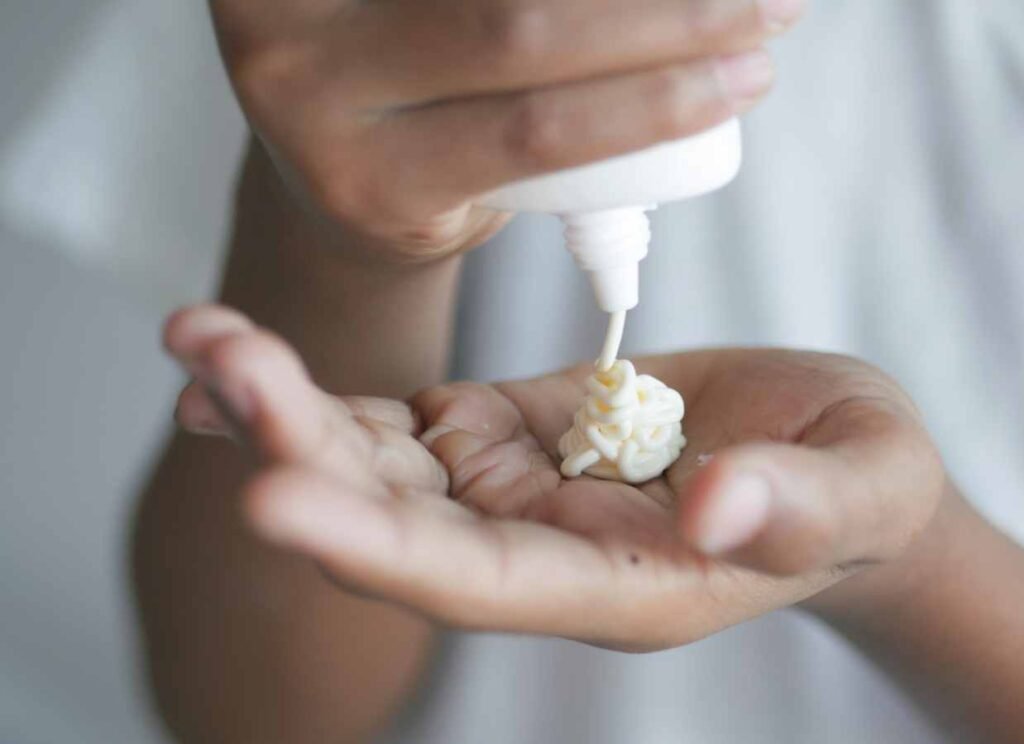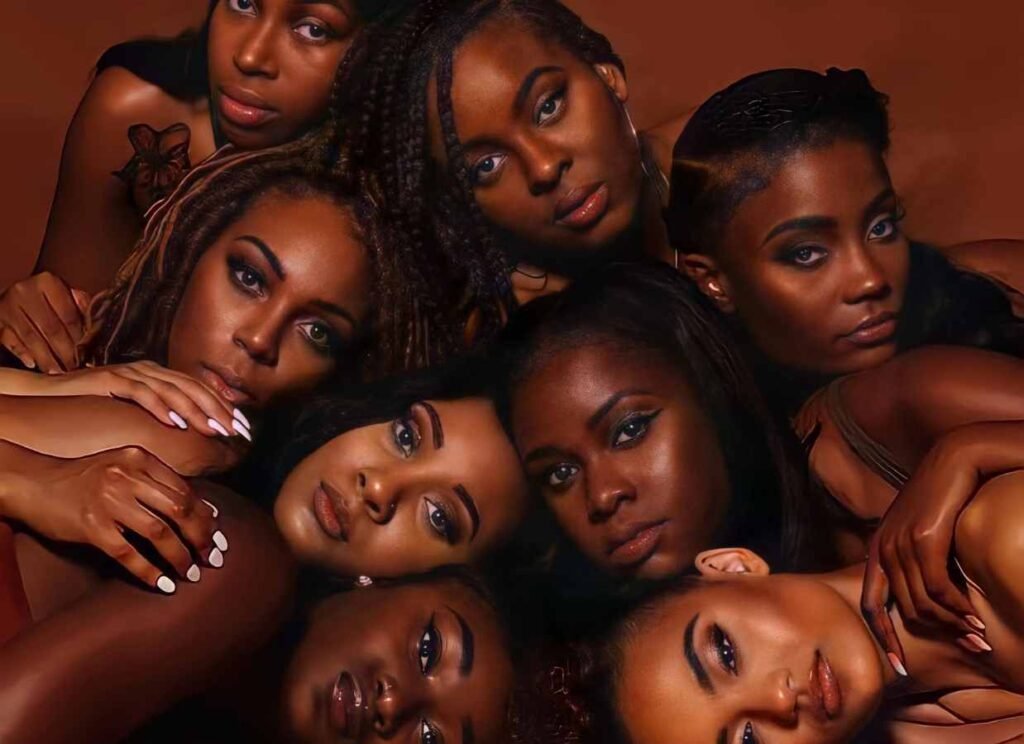Imagine a world without the sun, our primary source of light and energy. It’s hard to picture, right? The sun, while essential to our lives, has a complex relationship with our skin, especially when it comes to melanin-rich hues. From the deepest browns to the lightest shades of cinnamon, understanding how the sun interacts with this beautiful pigment is key to maintaining healthy skin and preventing potential damage.
We are going to cover:
- Understanding Melanin
- Sun Exposure and Melanin Skin
- Benefits of Sun Exposure
- Risks and Challenges
- Protective Measures
- Myths and Misconceptions
Understanding Melanin
Melanin is the pigment responsible for skin color, hair, and eyes. It is produced by melanocytes, found in the bottom layer of the skin’s epidermis. Melanin is not just a pigment, it’s a powerful natural defense mechanism against the sun’s ultraviolet (UV) radiation. By absorbing and dispersing UV rays, melanin helps protect skin cells from DNA damage that can lead to skin cancer and other harmful effects. Understanding this crucial role of melanin is not just informative, it’s empowering. It allows us to take better care of our skin and prevent potential damage.

Now, let’s get to know our star, melanin. It comes in two main types: eumelanin and pheomelanin. Eumelanin, the darker and more dominant pigment, is like the bodyguard of melanin skin. It’s the reason for those beautiful brown hues, providing a darker tone and increased natural protection against the sun’s harmful rays. This natural protection is a testament to the resilience and beauty of melanin-rich skin, reminding us all to celebrate our unique skin tones. But remember, this natural protection is not absolute, and all skin types, including rich hues, need proper care during sun exposure.
Sun Exposure and Melanin Skin
The sun emits three types of UV radiation: UVA, UVB, and UVC. UVC rays are absorbed by the Earth’s atmosphere and do not reach the surface, but UVA and UVB rays penetrate the atmosphere and affect our skin. UVA rays, with their longer wavelength, can penetrate deeper into the skin and are associated with aging.
They are present throughout the year and can penetrate clouds and glass. On the other hand, UVB rays primarily affect the outer layer of the skin and are responsible for sunburn. They are more intense in the summer and can reflect off surfaces like water, snow, and sand. This comprehensive understanding of the effects of UVA and UVB rays on the skin is crucial for all skin types, as it emphasizes the importance of formulating the right sun protection strategies. Remember, proper sun protection is not a choice; it’s a responsibility we all have for our skin.

People with deeper hues benefit from more natural protection against UV radiation. The increased presence of eumelanin means more UV rays are absorbed and dispersed before they can cause damage. This natural sunscreen effect reduces the risk of sunburn and some forms of skin cancer. However, it does not provide complete protection, and skin with any amount of melanin can still suffer from sun-related damage if not properly cared for. This underscores the importance of sun protection for all skin types, including melanated skin, and the responsibility to love our skin.
Benefits of Sun Exposure
While excessive sun exposure can be harmful, moderate exposure has several benefits, particularly for melanin-rich skin.
Vitamin D Synthesis
One of the most important benefits of sun exposure is the synthesis of Vitamin D. This essential nutrient plays a crucial role in bone health, immune function, and overall well-being. Vitamin D is produced in the skin in response to UVB radiation. However, the increased melanin in deeper skin tones can reduce the efficiency of this process, making it necessary to spend a bit more time in the sun to produce adequate levels of Vitamin D.
Psychological Benefits
Exposure to sunlight has been shown to improve mood and mental health. Natural light increases the production of serotonin, a hormone associated with boosting mood and helping a person feel calm and focused. Enjoying sun exposure can contribute to better mental health and a positive outlook. (We want you to be safe about it and protect that beautiful hue…)
Risks and Challenges
Despite the benefits, there are significant risks and challenges associated with sun exposure for melanin-rich skin.

Sunburn and Tanning
Although melanin-blessed skin is less prone to sunburn than lighter skin, it is not immune. Prolonged exposure to intense UV radiation can still result in sunburn, characterized by redness, pain, and peeling. Additionally, the tanning process, which involves the skin producing more melanin in response to UV exposure, can also lead to damage over time.
Skin Cancer
Skin cancer can affect anyone, regardless of skin tone. While those who have more melanin have a lower overall risk of developing skin cancer, when it does occur, it is often detected at a later stage, making it more dangerous. Types of skin cancer include basal cell carcinoma, squamous cell carcinoma, and melanoma, the latter being the most serious. Early detection and prevention are crucial for effective treatment and better outcomes. So remember to do your body scans and check your skin.
Hyperpigmentation
Hyperpigmentation is common in melanin-rich skin and is often exacerbated by sun exposure. Conditions such as melasma, characterized by dark, irregular patches on the face, and post-inflammatory hyperpigmentation, which results in dark spots following skin injury or inflammation, can be triggered or worsened by UV radiation. These conditions can be challenging to treat and may require long-term management and being patient with yourself.
Protective Measures
Protecting your beautiful hue from the sun’s harmful effects is essential for maintaining healthy skin.

Sunscreen Use
Using sunscreen is one of the most effective ways to protect the skin from UV damage. Regardless of skin tone, everyone should use a broad-spectrum sunscreen with an SPF of at least 30 with visible light protection. Sunscreen should be applied generously 15 to 20 minutes before exposure and reapplied every two hours or more often if exposed to the sun for long periods, swimming, or sweating. For melanated skin, selecting a sunscreen that does not leave a white cast can enhance comfort and encourage regular use. Rest assured, these measures are highly effective in protecting your skin, giving you the confidence and security you need for your skin health.
SPF Ranges Best For Skin Tones
- Lighter Hues (Light Brown): Use a broad-spectrum SPF 50 or 40 sunscreen. Opt for a lightweight, non-greasy formula that won’t clog pores, especially if you have oily or acne-prone skin.
- Medium Hues (Medium Brown): Use a broad-spectrum SPF 30 to SPF 50 sunscreen. Look for moisturizing formulas that contain antioxidants to help combat free radical damage.
- Deeper Hues (Dark Brown to Deep Brown): Use a broad-spectrum SPF 30+ sunscreen. Choose formulations that blend well without leaving a white cast. Gel-based or transparent sunscreens can be particularly effective.
Types of Sunscreens
- Mineral Sunscreens contain active mineral ingredients like zinc oxide or titanium dioxide. They sit on the skin’s surface and reflect UV rays. They are ideal for sensitive skin but can sometimes leave a white cast.
- Chemical Sunscreens absorb UV radiation and convert it into heat, which is then released from the skin. They tend to blend more easily into the skin without leaving a white residue, making them a good option for melanin-rich skin.
- Tinted Sunscreens contain mineral or chemical blockers and have added pigments that can help blend the sunscreen more seamlessly into darker skin tones, reducing the appearance of any white cast.
- Hybrid Sunscreens combine mineral and chemical ingredients to offer broad-spectrum protection. They aim to provide the best of both worlds: the gentleness and immediate protection of mineral sunscreens with the lighter texture and more effortless blending of chemical sunscreens. These are often well-suited for melanin-rich skin as they minimize the white cast while providing robust protection.

Common Skin Concerns and Suitable Sunscreens
- Hyperpigmentation: Look for sunscreens with added antioxidants like Vitamin C or niacinamide, which can help reduce dark spots and even skin tone.
- Acne-Prone Skin: Non-comedogenic and oil-free sunscreens are best to avoid clogging pores and exacerbating acne.
- Dry Skin: Hydrating sunscreens with added moisturizers, such as hyaluronic acid or glycerin, can help maintain skin hydration.
- Sensitive Skin: Mineral sunscreens with zinc oxide or titanium dioxide are less likely to irritate sensitive skin and provide adequate protection. If you are worried about a white cast, look for a tinted mineral sunscreen.
- Oily Skin: Lightweight, oil-free, and mattifying sunscreens are ideal for reducing shine and preventing clogged pores.
- Mature Skin: Sunscreens with added anti-aging ingredients, such as peptides or antioxidants, can help address fine lines and improve skin elasticity while providing sun protection.
Protective Clothing
Clothing is an excellent barrier against UV radiation. Wearing long-sleeved shirts, pants, wide-brimmed hats, and sunglasses can significantly reduce sun exposure. Fabrics with a tight weave and those specifically designed with UV protection offer the best defense. Additionally, darker-colored clothing can absorb more UV radiation, providing better security.
Behavioral Changes
Adjusting daily habits can also help protect the skin from sun damage. Avoiding peak sun hours, typically between 10 a.m. and 4 p.m., when UV radiation is most potent, can reduce the risk of sunburn and long-term damage. Seeking shade and using umbrellas outdoors are simple yet effective ways to minimize sun exposure.
Myths and Misconceptions
Many myths and misconceptions about sun protection and melanated skin must be addressed.
Common Myths
One common myth is that people with deeper hues do not need sunscreen. This misconception can lead to inadequate protection, increased sun damage, and risk of skin cancer. Another myth is that darker skin tones do not sunburn, which is false. While melanin provides some protection, it is not foolproof, and sunburn can still occur. Dark peeling skin is a common sign that the skin may be sunburnt.
Educating the Community
Accurate information about sun protection for melanin-blessed skin is essential. Education can empower individuals to take proactive steps to protect their skin and reduce the incidence of sun-related skin conditions. Community outreach, healthcare provider guidance, and public health campaigns can significantly dispel myths and promote sun safety.
Conclusion
The sun’s effects on melanin-rich skin involve both benefits and risks. While melanin provides a natural defense against UV radiation, it is not a substitute for proper sun protection. Understanding the importance of sunscreen, protective clothing, and behavioral changes can help individuals with melanin-rich skin enjoy the sun safely and healthily. By debunking myths and educating the community, we can ensure everyone takes the necessary steps to protect their skin and maintain overall well-being.
Remember, the key to healthy skin is balance—enjoying the sun’s benefits while taking appropriate measures to prevent damage. We can all bask in the sun’s rays safely with the proper knowledge and practices.
